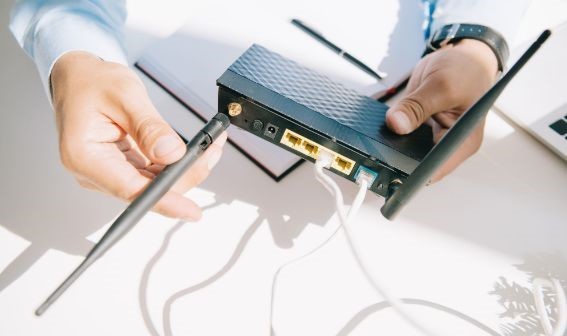
Effective Tips to Boost Wireless Signal Strength

With all the modern technologies in our lives, it is getting harder and harder to avoid using wireless devices. And with all these new devices that are added to our home networks comes a severe problem: weak Wi-Fi signals. According to George Hardesty, CEO at Data Alliance, modern home routers can support up to 200 devices, but people who want to use over 20 clients should choose a mesh network.
So, how do you get your Wi-Fi back up and running at full speed? A mesh is definitely the best solution, but there are a few things that you can try before investing a few hundred dollars in new hardware.
1. Update your router.
Log into your router's admin settings using the required user/pass information, and then update its firmware. If you can't log in, download the router manual from the Internet and discover how you can reset it. The process will usually involve holding down a small switch on the back panel for about 10 seconds. Do not forget to change the user/pass combination, making it harder for hackers to guess that information. On the other hand, if the router maker hasn't been providing firmware updates for your device within the last year, it's time to buy a new one, which will often run faster than the old product and is guaranteed to be more secure.
2. Move the router.
By doing this, you will get rid of some dead zones in your home. Ideally, you should place the router in the center of your house, but this may not be an option. So, move the router closer to the network clients that need a stronger signal. Do not hide it in a closet or behind a wall, though, because this will reduce wireless signal strength.
3. Change the Wi-Fi channel.
The 2.4 GHz band has 11 different channels, but the only ones that do not overlap at all are #1, #6 and #11. Since people who are living or working in the same building are very likely to use overlapping channels for their Wi-Fi networks, adjacent channel interference will lead to signal quality degradation.
Fortunately, the 5 GHz band uses a wider spectrum, each channel having its own 20 MHz non-overlapping frequency band. Wider channels, which are created by joining 20 MHz channels together, are able to transport data faster, but may introduce additional noise.
To choose a free wireless channel, use a Wi-Fi analyzer app for your smartphone. You can download one that works great for iPhones here, and this link leads to another one for Android devices.
4. Adjust the antennas.
Make them point towards the network clients that need more signal. If this does not work well enough, consider replacing them with a pair of antennas that have a higher gain. You can even build your own Wi-Fi antenna; just do a Google search, and you will discover that people have used Pringles cans to create them, for example. These home-made antennas may not look that great, but they have the potential to increase Wi-Fi signal strength significantly.
5. Unplug non-essential devices.
Did you know that your smart DVD player can use a lot of bandwidth without providing too many benefits? And that wireless camera which is supposed to help guard your valued possessions while you're taking that yearly vacation uses a lot of Internet data as well! The solution is simple: run an audit using the Wi-Fi analyzing apps mentioned above, and then get rid of the devices that use a lot of data, but don't provide real value.
6. Add a signal extender.
If things don't work out as planned, it's time to use a wireless range extender. Most of them can be installed within minutes, and their price is well under $100 in most cases. This may be the perfect solution for people who live in large homes, which have been built using brick, concrete, metal, and so on.